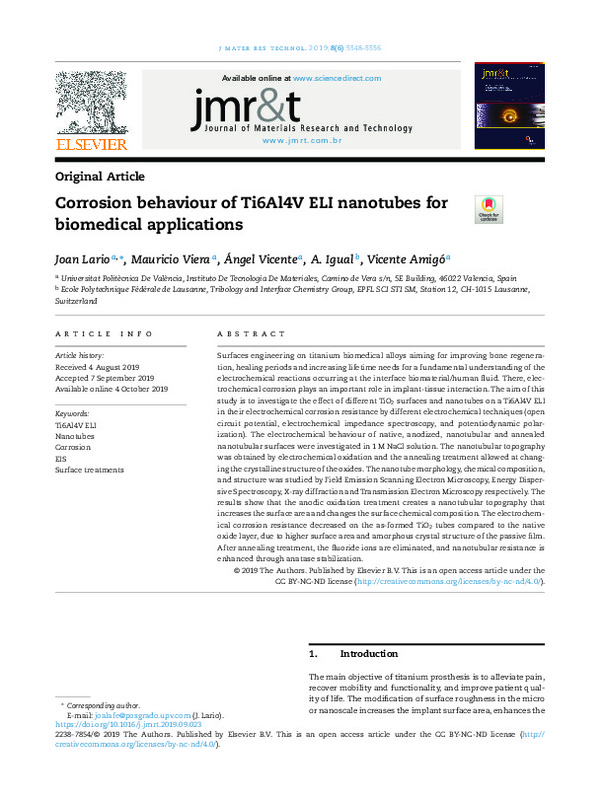JavaScript is disabled for your browser. Some features of this site may not work without it.
Buscar en RiuNet
Listar
Mi cuenta
Estadísticas
Ayuda RiuNet
Admin. UPV
Corrosion behaviour of Ti6Al4V ELI nanotubes for biomedical applications
Mostrar el registro completo del ítem
Lario, J.; Viera, M.; Vicente-Escuder, Á.; Igual Muñoz, AN.; Amigó, V. (2019). Corrosion behaviour of Ti6Al4V ELI nanotubes for biomedical applications. Journal of Materials Research and Technology. 8(6):5548-5556. https://doi.org/10.1016/j.jmrt.2019.09.023
Por favor, use este identificador para citar o enlazar este ítem: http://hdl.handle.net/10251/158845
Ficheros en el ítem
Metadatos del ítem
| Título: | Corrosion behaviour of Ti6Al4V ELI nanotubes for biomedical applications | |
| Autor: | Viera, Mauricio Igual Muñoz, Anna Neus | |
| Entidad UPV: |
|
|
| Fecha difusión: |
|
|
| Resumen: |
[EN] Surfaces engineering on titanium biomedical alloys aiming for improving bone regeneration, healing periods and increasing lifetime needs fora fundamental understanding of the electrochemical reactions occurring at the ...[+]
|
|
| Palabras clave: |
|
|
| Derechos de uso: | Reconocimiento - No comercial - Sin obra derivada (by-nc-nd) | |
| Fuente: |
|
|
| DOI: |
|
|
| Editorial: |
|
|
| Versión del editor: | https://doi.org/10.1016/j.jmrt.2019.09.023 | |
| Código del Proyecto: |
|
|
| Agradecimientos: |
The authors wish to thank the Spanish Ministry of Economy and Competitiveness for the financial support of Research Project MAT2014-53764-C3-1-R, the Generalitat Valenciana for support through PROMETEO 2016/040, and the ...[+]
|
|
| Tipo: |
|









